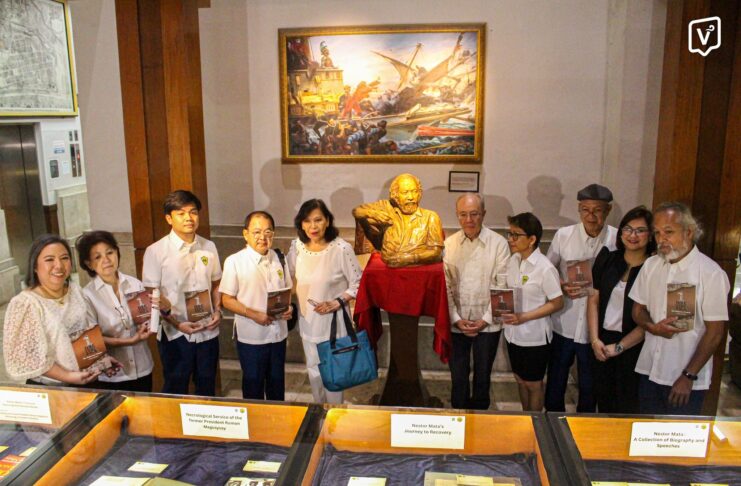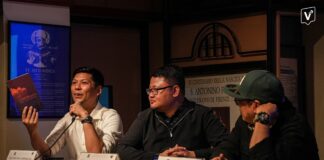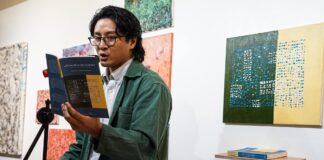Waking from an American dream
LET THE American dream stay American.
Take that from S. Lily Mendoza, assistant professor in Culture and Communication at the University of Denver in Colorado, when the UST Publishing House launched the Philippine edition of her book, Between the Homeland and the Diaspora: The Politics of Theorizing Filipino and Filipino-American Identities, last Sept. 12 at the Faculty of Arts and Letters Audio Visual Room in St. Raymund’s Bldg.
The first globe-trotter
HE CIRCUMNAVIGATED the world even before Elcano did.
Enrique el Negro (Cacho Publishing House, 2003) is Carla M. Pacis’ meta-narrative on the controversial theory of historian Carlos Quirino that Enrique, a Malay native, was the first person to circumnavigate the world and not the Spaniard Sebastian Elcano.
A “little” inspiration
A LITTLE inspiration is all it takes to become a good writer.
But for Filipino-American poet Fidelito Cortes, it takes a good writer to make even the most insignificant thing, event or detail his source of inspiration. A creative artist even in his choice of subject, Cortes draws inspiration for his poetry from the most prosaic occasions like going to the mall, sweeping the floor, walking to the bus stop, or taking photos.
(Hi)story-telling
TALL tales may do for kids especially when garnished with history so that history becomes more animating, more alive.
American novelist Chris Eboch, regional adviser of the Society of Children’s Book Writers and Illustrators (SCBWI) in New Mexico, has just done another concoction of fact and fiction in her book, The Well of Sacrifice (Clarion Books, 1999). The book is a historical novel set in ninth-century Guatemala during the height of the Mayan civilization. It is intended for fourth grade pupils (10-12-year-olds) in their study of Mayan history.
Taguan at kamatayan
SINONG batang Pinoy ang hindi dumaan sa paglalaro ng taguan-pung? Bagaman isa itong sikat na larong pambata, hindi maituturing na pambatang babasahin ang Taguan-Pung at Manwal ng mga Napapagal (UST Publishing House, 2006) ni Eros S. Atalia, isang propesor sa Filipino sa Faculty of Arts and Letters. Tinatalakay nito ang mga morbid na isyu gaya ng pagpapakamatay.
Ang hubad na katotohanan
SA MATA ng mga mananakop, simbolo ng kawalan ng sibilisasyon ang ladlad na dibdib ng mga Pilipinang katutubo. Ngunit sapat ba itong dahilan upang sakupin ang ating bansa at samantalahin ang hubad na katawan ng mga primitibo?
Ilan ito sa mga puntong tinalakay sa ikalawang bahagi ng serye ng lektura ng mga Filipino-American na manunulat at iskolar noong Hulyo 27 sa UST Library Conference Hall. Inihandog ito ng Department of Languages, Literature and Philosophy, Department of Humanities, Arts and Letters Literature Society, at ng Varsitarian.
Adios, Español?
THREE hundred and thirty-three years of Spanish presence in the Philippines was not enough to make the Spanish language popular among Filipinos.
This is the sad reality that the Spanish language faces in the country, one of many former Spanish colonies. During the Marcos regime in 1973, Spanish ceased to be an official language in the Philippines. It became non-compulsory in the college curriculum in 1987.
Ola! Filipinos must learn Spanish
SPANISH means business and economic opportunities. The International Container Terminal Services, Inc., a global port management corporation based here in Manila, operates port in Brazil, Argentina, and Mexico, whose Latin culture the Philippines shares, aside from occasional boxing matches (Pacquiao vs. Larios).
Meanwhile, Spanish and Latin American businessmen are investing in the Philippines. Spain, Europe’s fastest growing economy, has invested heavily in hotel, tourism, and banking in the Philippines.
Spanish letters in Philippine literature
MANY Filipinos know Spanish poetry only through the immortal poems of Thomasian and National Hero Jose Rizal, especially Mi Ultimo Adios. Unknown to many are the Spanish poems of other equally great nationalists who were masters of the colonizer’s language.
The 19th century saw the golden age of Philippine literature in Spanish, many of them written by Thomasians. These writers inspired the revolutionary march to freedom. Their works now bear testament to the nation’s Hispanic roots and UST’s spirit of humanism.
Love’s spells, pains and cupidity
COMIC book author Dean Francis Alfar makes an impressive crossover to Philippine fiction with his first novel, Salamanca, (Ateneo de Manila University Press, 2006), which won last year’s Palanca Grand Prize for the Novel.
Employing magic realism, a literary technique that weaves fantastical elements in a realistic setting, Alfar relays the love story of Gaudencio Rivera and Jacinta Cordova without cheesy idylls, using reverie rather than sentimentalism.












